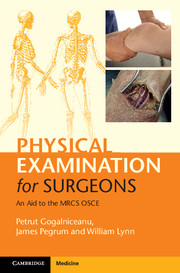Book contents
- Frontmatter
- Dedication
- Contents
- List of contributors
- Introduction
- Acknowledgments
- List of abbreviations
- Section 1 Principles of surgery
- 1 Principles of surgical practice
- 2 Surgical history and documentation
- Section 2 General surgery
- Section 3 Breast surgery
- Section 4 Pelvis and perineum
- Section 5 Orthopaedic surgery
- Section 6 Vascular surgery
- Section 7 Heart and thorax
- Section 8 Head and neck surgery
- Section 9 Neurosurgery
- Section 10 Plastic surgery
- Section 11 Surgical radiology
- Section 12 Airway, trauma and critical care
- Index
2 - Surgical history and documentation
from Section 1 - Principles of surgery
Published online by Cambridge University Press: 05 July 2015
- Frontmatter
- Dedication
- Contents
- List of contributors
- Introduction
- Acknowledgments
- List of abbreviations
- Section 1 Principles of surgery
- 1 Principles of surgical practice
- 2 Surgical history and documentation
- Section 2 General surgery
- Section 3 Breast surgery
- Section 4 Pelvis and perineum
- Section 5 Orthopaedic surgery
- Section 6 Vascular surgery
- Section 7 Heart and thorax
- Section 8 Head and neck surgery
- Section 9 Neurosurgery
- Section 10 Plastic surgery
- Section 11 Surgical radiology
- Section 12 Airway, trauma and critical care
- Index
Summary
Surgical history
Introduction
Age
Occupation
Presenting complaint (PC)
• Symptom 1 duration
• Symptom 2 duration
• Symptom 3 duration
History of presenting complaint (HPC)
• Quality: what, where and how
• Quantity: how much and impact on life
• Time line: duration, onset, progression, offset • Associated features, risk factors and complications
Past medical history (PMH)
• Similar problems in the past
• Medical history: MJTHREADS (MI, jaundice, TB, hypertension, rheumatoid, epilepsy, asthma/COPD, diabetes, surgery or strokes)
• Anaesthetic history
• General risk factors: stroke, ischaemic heart disease, angina, shortness of breath, COPD, renal failure, diabetes, change in bowel habit, DVT, PE
• Women: last menstrual period (LMP), vaginal bleeding or discharge, pregnancies, deliveries
Past surgical history (PSH)
• Open surgery
• Laparoscopy
• Endoscopy/endovascular procedures
• Ultrasound/CT/MRI imaging
• Surgical fitness assessment: mobility, able to climb one flight of stairs, ability to lie flat, maximal exercise distance
• Bleeding risk: bleeding disorders
Drug history (DH)
• Allergies
• Regular medications
• Medications taken since symptoms have started
• Anticoagulant or antiplatelet agents: warfarin, heparin, aspirin, clopidogrel
• Recreational drugs
Social history (SH)
• Smoking
• Alcohol
• Home + 3 others (work, social, personal)
Family history (FH)
• Relevant hereditary conditions
• Exposure to any risk factors of acquired disease
Systems review (SR)
• Systems review if not already undertaken
Summary of findings and confirmation that they are correct
Any questions? Any concerns?
Inform patient of future plans
Proceed to examination
Examination notes
What is the purpose of the history?
• The primary aim of the history is to establish a list of differential diagnoses based on the patient's history of presenting complaint and risk factors.
• The second aim is to determine the patient's medical, social and functional background, which would guide further therapy and management.
- Type
- Chapter
- Information
- Physical Examination for SurgeonsAn Aid to the MRCS OSCE, pp. 16 - 26Publisher: Cambridge University PressPrint publication year: 2015

